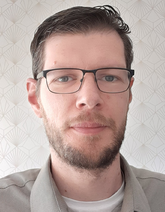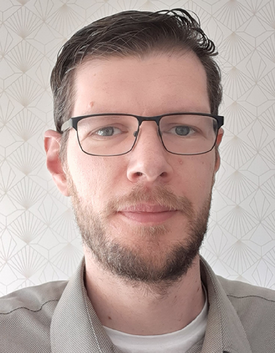Peter A. Korevaar
Graphical Abstract
 |
Position, Location: | Assistant professor, Radboud University, Institute for Molecules and Materials, Nijmegen (The Netherlands) |
| Homepage: | www.korevaarlab.com | |
| ORCID: | orcid.org/0000-0002-3395-7197 | |
| Education: | 2010 Master in chemical engineering (specialization molecular engineering), Eindhoven University of Technology (The Netherlands) 2014 PhD with Prof. E. W. (Bert) Meijer and copromotor Prof. Tom F. A. de Greef, Eindhoven University of Technology (The Netherlands) 2014–2017 Postdoc with Prof. Joanna Aizenberg, Harvard University, Cambridge (USA) |
|
| Research: | Life-like materials, self-assembly, systems chemistry, active matter, and self-organization | |
| Hobbies: | Playing trumpet, reading nonfiction books |
The greatest scientific advance of the last decade was the rise of AI. It is interesting to see what advances this will bring us in chemical sciences and the development of complex chemical systems.
My favorite example of chemistry/science in everyday life is the magic milk experiment. You will end up with a terrible mess if you do it with young kids, but still it's fun to watch the emergence of swirls and patterns.
Modern science needs to focus on exploring the unknown.
I would have liked to have invented the microscope.
The most important future applications of my research are “life-like” materials with embodied intelligence that reconfigure and optimize themselves to variable tasks.
My favorite job activity in the lab was observing the behavior of our self-organizing droplets, assemblies, and patterns under the microscope.
My favorite research conferences are the Gordon Research Conferences (e.g., on systems chemistry, supramolecular chemistry, and self-assembly) because of their focus, great atmosphere, and opportunity to interact in a relaxed setting with both established and young researchers in the field.
The most rewarding aspect of refereeing is to learn something interesting.
My favorite thing about my lab group is their creativity.
I advise my students to always work on drafts and figures as a means to continuously organize the “thinking process” while the project is still ongoing.
I am most proud of my group when they discover something unexpected in the lab and go all-in to understand what is going on. In fact, many of the papers from our group involve a surprising phenomenon which turned out to be pivotal to build chemical systems that self-organize and display some sort of life-like behavior.
I recharge my batteries by spending time with my family.
If I were not a scientist, I would be an engineer, or something where I can design and build stuff.
My favorite podcast is NPO Radio 1 De Ongelooflijke Podcast.
If I were stranded on a desert island and could have only one book, I would choose some instructive literature on how to get away from that island as soon as possible, because I like what I am doing now too much to exchange it for some palm trees, white beaches, and tropical temperatures.
Behind the Science
When first-author Priyanshu Singh discovered the droplets chasing each other through a solid decylamine layer formed at an air/water interface, we immediately noted the resemblance to the classic movie of a white blood cell chasing a bacterium – recorded in the 1950s by David Rogers at Vanderbilt University. How cool is it to establish such a phenomenon based on “simple” synthetic building blocks? Having unraveled the forces and interactions involved, we foresee that the versatility of our design opens new pathways toward collectively operating droplet systems that self-organize into reconfigurable structures and maybe even devices.
The author presented on this page has published his first article as a submitting corresponding author in Angewandte Chemie:
“Predator-Prey Behavior of Droplets Propelling through Self-Generated Channels in Crystalline Surfactant Layers”: P. Singh, P. A. Korevaar, Angew. Chem. Int. Ed. 2025, 64, e202502352.
International edition: DOI: 10.1002/anie.202509726
German edition: DOI: 10.1002/ange.202509726





